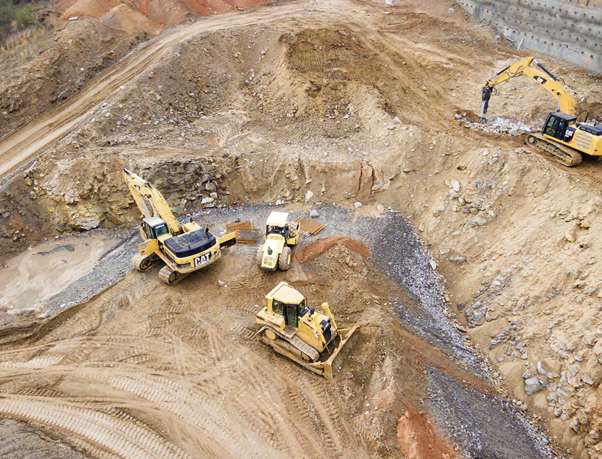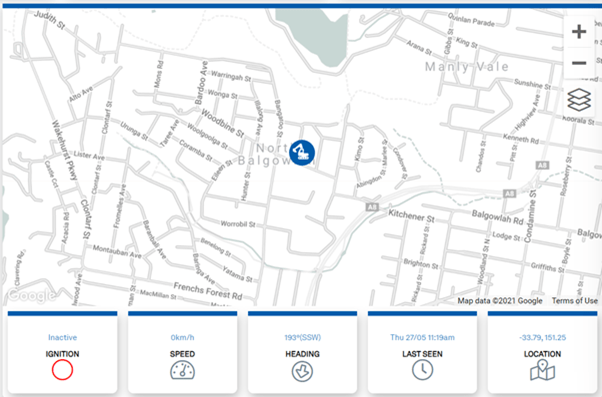It’s a big world, full of many buzzwords, out there. That means it’s very easy to get lost when you’re trying to figure out what you actually need to make your operation more efficient.
There seems to be a consensus though – even if it took a bit of time for most industries to accept. And that consensus is that properly leveraged digital tools can generate major efficiencies in a business.
But how do you get started? What exactly should you be looking for?
This is a hard question, as the answer will vary from operation to operation. It depends on your organisation’s maturity level and which digitised components you’ve adopted. Hopefully, this article will give you a bit more insight into what you can achieve beyond all the buzzwords, with real-life examples.
Of course, we’re always happy to work through what this could look like in the context of your particular operation. So if this is a chat you’d like to have, feel free to reach out!
Starting with a bit of history
Since 1991, road authorities in certain Australian states have mandated equipping heavy vehicles with onboard computers. These computers needed to be capable of logging trip-by-trip information so that companies could audit each driver’s on-road behaviour and decisions.
In concept, this was much like a plane’s black box. At the time, the information would only be used if a vehicle was involved in an incident, to help inspectors and insurance companies better understand the context.
Typically, the minimum requirement for these systems was the ability to monitor:
- how long vehicles were driven for
- how long they stopped for
- how fast they were driven
- how much distance they covered
- the locations and times of trip start and finish (manually entered).
Truck manufacturers and outsiders both scrambled to comply with this rule and create systems that could support it. And connecting the monitoring equipment to anything else was near impossible. When Australia’s first consumer GSM phone networks launched in 1993, they couldn’t carry data, so many of those early computer systems were proprietarily built.
However, as onboard computer technology advanced, manufacturers saw an opportunity to simplify vehicle maintenance and servicing. Increasing the capability of the ‘black boxes’ ensured that only certified technicians could read the very complex and valuable data coming out of the systems. This then maximised the manufacturer’s servicing and spare parts revenue.
Of course, telecommunications networks have developed significantly since then. With far cheaper data plans, manufacturers could develop new solutions to access and share relevant data over wireless networks.
One of these solutions was GPS positioning, which carries an increasing market value even today.
This evolution and transformation in the Transport industry then had a similar impact on other industries. For example, operations in the Agriculture and Environmental Management space had both been taking analog measurements – more-or-less accurately – for a long time.
Today, both industries can significantly scale up their measurements by leveraging cheaper connected devices. As a result, they have access to a much better digital picture that enables operators and decision-makers to make more accurate decisions. They may even decide to automate the decision-making altogether.
What separates tracking, telemetry, IoT and a fully digital operation?
To illustrate the difference between these four options, let’s take the example of an excavator:
Location tracking
Location tracking provides you with information on where the excavator is at any given time – usually on a map. More often than not, the data can tell you where the machine has been as well. Plus, sometimes, onboard systems may tell you if the asset was on or off at the time of tracking.
This is valuable information if:
- the equipment gets lost
- you want to know if it’s working when it shouldn’t be
- you want to know if it’s not working when it should be.
However, accessing this information still requires an operator to manually look at the map to determine where the excavator is. Additionally, the data is sometimes provided by simple IoT (internet of things) devices that are ‘slapped’ onto the equipment. They work off their own power sources, which means battery life becomes a concern.
Telemetry
Telemetry provides a more complete picture of the excavator. Depending on the availability of data, the information it supplies could include simple engine fault codes or specific data points such as:
- ignition
- odometer
- engine hours
- fuel
- seatbelts
- wipers
- tyre pressure
- RPM
- weight lifted, and so on.
This data provides a more accurate representation of the asset in the digital world.
This kind of telemetry data is generally provided by the manufacturer in a cloud platform. Alternatively, you might access it through devices that plug into the onboard computer if the manufacturer makes a diagnostics port available. Another option is wiring a device into the engine run signals.
IoT
Whilst both of the previous examples are based on using IoT devices, the excavator is not yet a true IoT project. The missing piece is the ‘So What?’ Now that you have this data, how will you actually use it to make your work more efficient?
This is where many IoT projects fail. There’s no ‘one size fits all’. And making work more efficient usually requires either:
- changing the way you operate to work with this new system, or
- creating integrations with your existing operational systems.
There’s merit in both of these methods. However, in our experience, change is far harder to implement when you have to roll it out across a large workforce. That’s why we often recommend enhancing your current ways of working by enriching them with better data (this is what ‘Inauro’ means in latin!) as a more robust approach.
Digital operation
Industrialising the data your assets generate is where you start creating a truly digital operation.
Yes, having telemetry on the excavator in our example is usually valuable. But often, the telemetry alone isn’t enough to operationalise its use. Whilst the asset generates data in the digital world, that data remains in a silo. Depending on how you acquired the data, it might not be available to you in a platform that’s flexible enough to take in other data components. And only by ingesting those other components can it bring you the automation you’re after.
For operators on the ground, the platform needs to host both:
- asset telemetry data, and
- data from line of business systems that use that asset (think of site induction systems, finance systems, service schedule systems etc).
Linking the two types of systems is generally not a trivial process. But without that link, the data simply won’t be used (or if it is, it won’t be anywhere near as valuable as it could be.).
How data fusion platforms like PerspioTM can help to create a true digital operation
PerspioTM is the link between those systems: .Once you’ve integrated telemetry data with your line of business systems, a data fusion platform like Perspio™ can automatically push data to those systems. Or, alternatively, it can call data from those systems to provide context to the telemetry.
Beyond this, PerspioTM can enable concepts like Digital Twins within the platform, enabling complete flexibility to group sensors, assets and people any way your operation needs. That excavator now isn’t an isolated asset anymore, PerspioTM can group the excavator (physical asset in an ERP data base), the sensors on it (the IoT component), it’s operator (through the HR and induction system) as one logical object.
This, in turn, makes the other data feeds going into the same platform more relevant than ever. Plus, PerspioTM allows you to automatically capture data feeds that have nothing to do with location telemetry, such as checking:
- Does the operator have a licence to operate the machinery?
- Has the operator been inducted onto the site and done all appropriate safety training?
- Has the pre-start checklist for the excavator been executed correctly?
- Is there any risk of servicing interruption?
This is where the real value of IoT and digital evolution lies – automating processes that are currently manual, and for which there’s often no audit trail.
Having this data easily accessible at your fingertips means less risk for the operation, more efficiency and control, and better outcomes for your customers and your organisation. It’s a total win, win.
To find out more about how PerspioTM can help you create true digital evolution in your operation, get in touch today!




